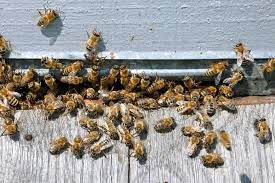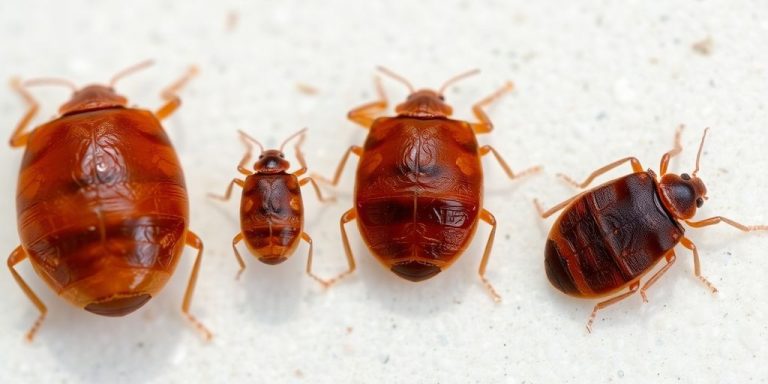Welcome to the Bug Battleground: Why Oklahoma is a Pest Paradise
Ah, Oklahoma. Land of sweeping plains, breathtaking sunsets, and… a teeming metropolis of insects and critters vying for a spot in your home and garden. It’s an unavoidable truth: residing within this state’s borders involves a silent agreement to share our space with a lively assembly of creatures, great and small. Our unique climate, a capricious blend of humid summers and surprisingly brisk winters, unwittingly crafts an ideal haven for a remarkable diversity of pests.

Who exactly constitutes this uninvited entourage? Let’s peruse the guest list:
- The Usual Suspects: Ants – those relentless foragers, particularly carpenter and acrobat ants with their knack for structural shenanigans. Cockroaches – the resilient German and hulking American varieties that seem to shrug off even the most determined swatting attempts. Mosquitoes – not merely an annoyance, but potential vectors of the dreaded West Nile virus. Bed bugs – tiny, cryptic vampires that turn slumber into a nightly battle. Spiders – with the ominous presence of the brown recluse and the iconic black widow, demanding a cautious respect. And ticks – silent carriers of Lyme disease, turning a simple hike into a potential health hazard. Let’s not forget the ever-present rodents, those furtive navigators of our homes.
- Lawn & Garden Crashers: Grubs – insidious root munchers undermining our verdant lawns. Armyworms – devouring foliage with military precision. Billbugs – silently sabotaging our turf. And red spider mites – those minuscule sap-suckers capable of decimating entire gardens.
But this isn’t just about a minor annoyance; these unwelcome guests pose real threats. They’re not merely a nuisance buzzing around our heads; they represent potential health hazards and tangible destroyers of our property. The stakes, therefore, are significantly higher than simple discomfort.
From Sulfur to Smart Sprays: A Brief History of Bug Busting in Oklahoma
Our ongoing skirmish with pests isn’t a new phenomenon. Indeed, humanity has been wrestling with these miniature adversaries for millennia. Let’s journey back in time, tracing the evolution of our methods for dealing with these six-legged squatters.
- Ancient Remedies (Way, Way Back): Long before the advent of sophisticated chemicals and gleaming laboratories, Oklahomans – and indeed, their ancient Sumerian counterparts – ingeniously employed rudimentary methods. Sulfur, with its pungent aroma, served as a primitive deterrent. Botanical extracts, drawn from the very plants around them, offered another line of defense. Clever farming techniques, such as strategic planting schedules designed to disrupt pest life cycles, showcased an early understanding of ecological balance. Even the early public health endeavors in burgeoning Tulsa, with their focus on draining mosquito breeding grounds, reflected an intuitive grasp of preventative measures.
- The Chemical Revolution (Mid-20th Century): The mid-20th century ushered in a transformative era, fueled by the dazzling promise of synthetic chemistry. DDT, a veritable silver bullet, entered the scene alongside other potent pesticides. Suddenly, the daunting task of pest control appeared almost trivial. This epoch witnessed the rise of formal pest control companies, armed with these new chemical weapons.
- The “Silent Spring” Wake-Up Call: The unbridled enthusiasm for chemical solutions, however, soon encountered a sobering counterpoint. Rachel Carson’s seminal work, “Silent Spring,” delivered a profound jolt to the collective conscience. It sparked a nascent environmental awareness, compelling us to question the long-term consequences of our actions. This awakening led to the establishment of the EPA and the emergence of a new philosophical paradigm: Integrated Pest Management (IPM).
- OSU’s Role: Oklahoma State University (OSU) stepped forward as a pioneering force, embracing and championing the principles of IPM. They meticulously developed and disseminated IPM strategies, emphasizing long-term prevention and smarter, more ecologically sensitive pest control practices.
What Oklahomans Want Now: Modern Trends in Pest Control
The landscape of pest control continues to evolve, shaped by shifting consumer preferences and a growing awareness of environmental stewardship. What are the defining trends that characterize the modern approach to pest management in Oklahoma?
- Green is the New Black: A palpable shift toward eco-consciousness permeates the industry. There’s a pronounced demand for environmentally friendly solutions – plant-derived products, reduced-risk pesticides meticulously screened for minimal impact, and holistic IPM approaches that prioritize ecological balance.
- The Power of the Click: In this digital age, online reputation reigns supreme. Online reviews wield immense influence, shaping consumer choices. Potential customers meticulously scrutinize a company’s digital footprint before entrusting them with their pest control needs.
- DIY vs. Pro: A Balancing Act: Homeowners often attempt to tackle minor pest incursions with DIY solutions. However, when confronted with serious infestations, such as the insidious advance of termites, or for ongoing preventative maintenance, they readily enlist the expertise of seasoned professionals.
- Booming Business: The pest control industry in Oklahoma is experiencing robust growth, witnessing an increase in the number of businesses and the creation of new jobs. This underscores the profound value Oklahomans place on maintaining a pest-free living environment.
Bugs, Bills, and Battles: The Controversies Keeping Pest Control Professionals on Their Toes
Beneath the surface of routine pest management lie several contentious issues, challenges, and debates that keep pest control professionals on their toes.
- The Great Regulation Debate: A persistent question lingers: Should Oklahoma harmonize its pesticide regulations with federal EPA standards, or should it maintain its own distinct framework? House Bill 1755 ignited a passionate debate, highlighting concerns about preserving local control and ensuring public transparency.
- The Marijuana Muddle: Oklahoma’s burgeoning cannabis industry has introduced an unexpected layer of complexity. Farmers in proximity to marijuana cultivation sites voice concerns about potential pesticide drift, leading to potential legal liabilities and complicating access to commercial applicators for their own agricultural needs.
- Environmental Crossroads: The application of pesticides invariably raises critical environmental considerations. Will these chemicals contaminate groundwater reserves? Will they inflict harm on vital pollinator populations? Will they drift onto neighboring properties, causing unintended consequences? The Oklahoma Department of Agriculture, Food and Forestry (ODAFF) diligently monitors the situation, investigating any instances of misuse or negligence.
- The Rise of Super Pests: A concerning trend is the emergence of pesticide-resistant pests and herbicide-resistant weeds. These “super pests” demonstrate a remarkable ability to adapt and circumvent conventional control measures. This necessitates a constant evolution of treatment strategies and underscores the paramount importance of IPM principles.
- Whose Problem Is It Anyway? (Landlord-Tenant Edition): The question of financial responsibility for pest control, particularly in rental properties, often sparks confusion. In Oklahoma, landlords typically bear the cost of pest control within the first 30 days of a lease. After this initial period, the responsibility often shifts to the tenant, with the notable exception of termites, which remain the landlord’s responsibility.
The Crystal Ball: What’s Next for Pest Control in the Sooner State?
Gazing into the future, what innovations and shifts can we anticipate in the realm of pest control within Oklahoma?
- Tech Takes Over: The future is decidedly high-tech.
- Smart Detection: Prepare for a new era of sophisticated detection methods, including infrared technology, acoustic sensors capable of detecting subtle pest activity, and even the deployment of termite-sniffing dogs.
- AI & IoT: Smart traps and comprehensive monitoring systems will leverage the power of artificial intelligence and the Internet of Things, providing real-time alerts and predictive insights into pest patterns. Imagine drones autonomously patrolling properties, acting as vigilant sentinels.
- Biotech Breakthroughs: Could biotechnological advancements, such as the Wolbachia project targeting mosquito populations, reduce our reliance on chemical interventions?
- Greener and Smarter Solutions: The emphasis on truly eco-friendly solutions will intensify. Expect even more refined IPM strategies that minimize chemical use while maximizing efficacy.
- Legislation on the Move: New legislative initiatives, such as the Pesticides Reform Act (HB2522) and the Landscaper Act (HB2060), are poised to shape a safer and more rigorously regulated industry. Borate-based pesticides are also gaining legislative recognition.
- Climate Change: The Ultimate Game Changer: Climate change represents a profound and far-reaching challenge. As Oklahoma’s climate undergoes transformations, anticipate the emergence of novel pests, more aggressive infestations, and altered pest behaviors. Pest control experts will need to adapt continuously to this shifting landscape.
- Data-Driven Decisions: The future hinges on the power of data. Precise, proactive pest management decisions will be guided by data analysis, enabling a transition away from reactive spraying and toward more targeted and effective interventions.
Conclusion: Staying Ahead of the Swarm
From the wisdom of ancient remedies to the promise of cutting-edge technologies, pest control in Oklahoma is a dynamic and ever-evolving field. It’s a field that is perpetually adapting to new challenges, environmental concerns, and the ever-changing expectations of the public. Whether you are a homeowner striving to protect your abode or a farmer safeguarding your crops, a thorough understanding of these trends, coupled with the adoption of smarter and more sustainable practices, is the key to triumphing in the perpetual battle against Oklahoma’s most persistent squatters.



